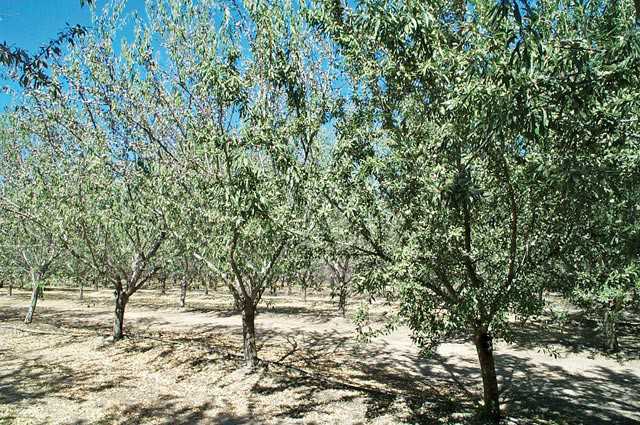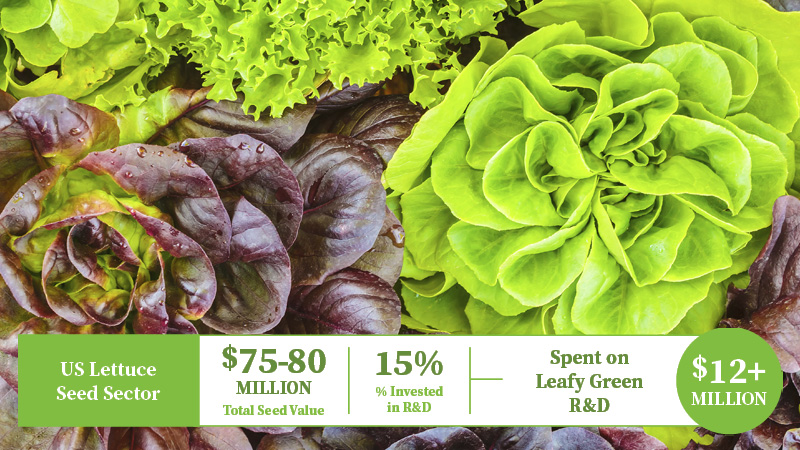Irrigation Management Strategies For Your Almond Orchard
Life has a way of reminding us what really matters. Unfortunately, it is often the lack of something that drives home the point. 2014 looks to be a year that reminds all of us that water is the number one thing needed to successfully farm almonds in California.
With a range of water availability reported around the state from nothing to deep wells — on good aquifers — this article covers general information on water stress in almonds, the tools needed to manage almond orchards under reduced water availability, and different practices specific to different water availability situations. More complete information is available, free, from several University of California and UC Cooperative Extension websites listed at the end of this article.
Under limited water availability, orchard irrigation management shifts from maintaining optimum orchard hydration throughout the season, like an athlete training for peak performance, to avoiding extreme stress season-long, like a hiker in the desert, nursing their canteen, balancing their thirst against the water level in the canteen to keep moving and hold some reserve for later.
Pressure Bomb Is Best
Reduced irrigation is most easily and accurately applied with pressurized irrigation systems – solid set, drip, or micro-sprinkler irrigation. The pressure bomb is the key tool to managing almond orchards under reduced water availability. This device measures plant water status as Stem Water Potential (SWP). No other tool a grower can buy today does this. It is highly flexible, allowing a grower or consultant to check multiple trees per block across multiple orchards on any given day.
The portable, pump-up units fit behind the seat of a pickup. The larger, heavier air-tank models fit on the back of an ATV or on a “mule”. Measuring SWP with a pressure bomb takes time and a trained person. That costs money, but a lot less than crop loss due to extreme water stress.
To complement pressure bomb data, install (if you haven’t already) soil moisture sensors throughout the orchard to ensure that irrigation, when applied, just fills the root zone and no more. Water that reaches below the root zone is not plant-available. If you are applying full irrigation sets when a certain stress level in the tree is reached – by measuring SWP with the pressure bomb – soil moisture sensors tell you when the root zone soil is just refilled. What about managing irrigation by “letting the trees tell you when they need water?” Trees do tell you when they need water, but, in my experience, they tell you about two weeks too late, when interior spur leaves yellow and drop.
Stress Levels Vary
The same water stress level has differing impacts on almond trees, depending on when in the growing season it happens. Almond trees are most vulnerable to water stress at two distinct times during the growing season: from leaf out through mid-June when crop nut growth for this year plus shoot and spur growth for future crops occurs, and again in late summer/early fall when flower buds differentiate and carbohydrates are stored to provide energy for nut and shoot growth early the next year.
Mid-summer to hull split is a time when moderate water stress can be tolerated without much impact on the crop or trees. However, if water stress is not carefully managed and severe water stress occurs in the whole orchard or in localized areas, yield reduction can occur from water stress during this time as well. In a four-year study of regulated deficit irrigation, applying approximately half the normal amount water at regular irrigations for two weeks starting at hull split in July, then, returning to full irrigation with the last irrigation(s) prior to harvest, provided a managed stress. There were no negative effects on yield during this four-year trial and some water was saved. Implementing this practice carefully in a water-short year should have no negative effects and is good stewardship of a limited resource.
Finally, dial in your irrigation system to avoid any water loss and maintain uniform irrigation delivery to the orchard. This includes irrigating at night to reduce evaporation losses (less costly electricity, too), time sets to avoid runoff, remove competing weeds, maintain the irrigation system to avoid plugging and uneven delivery in general, and monitor soil moisture to avoid applying more water than the root zone can hold.

Water stress causes leaf drop in almonds, reduces % shaded area, and reduces water requirements.
(Photo credit: Ken Shackel)
The following are several scenarios for drought irrigation management drawn from UC research reports and the drought management website.
■ No irrigation water available. There isn’t much to do under this very difficult situation. In fact, I can’t give you any information that will help improve the situation. I can pass along what didn’t work in a recent UC experiment where almond trees got no irrigation water all season. In that study, pruning off major scaffolds to reduce canopy leaf area and/or spraying the orchard with white clay (Surround) to reduce stress didn’t make any real difference in the water stress in the trees. So, don’t do anything drastic, spray out the winter weeds to conserve any spring rain you may have/get and hope for a wet fall to recharge the soil profile and reservoirs for next year. Unfortunately, while the trees may survive if the orchard started the season with 6-8 inches of rainfall stored in the soil, the crop loss in this year and next year (if full water is available) will be 50-80% compared to a fully irrigated orchard.
■ Severe reduction in water available (25-50% ET available). Early season stress is inevitable when working with this little water. Start irrigating when SWP reaches -12 to -14 bars in the spring. Once June arrives, shift the irrigation threshold to -22 bars until hull-split. Apply a good shot (in the range of 2”) of water as hull split begins to avoid/reduce stick-tights. Apply postharvest irrigation with similar target SWP as spring. This program will not avoid crop loss compared to fully irrigated trees. Research results indicate that it will take two years of full water availability to return production to that of unstressed trees.
■ Moderate reduction in water available (70-85% ET available). There are two general approaches to working with relatively modest reductions in water availability – the “frequent sips” or the “full drinks spaced far apart” approach. The first strategy is to apply 15-30% less water – depending on water allocation/well water availability – with each irrigation set than recommended by ET calculation. This doesn’t mean you apply the same amount of water for each month, rather a percent reduction over time. For example, if ETc + system efficiency adjustment calls for 1” of water in late April/early May, apply 0.70-0.85” in that same period. If ETc calls for 2” per week in late June, then apply 1.4-1.7” of water.
The second strategy is to fully irrigate (following SWP, ETc, moisture sensors, etc.) until June 1. Between June 1 and hull split, use an irrigation threshold of -20 to -22 bars with a solid shot (2” or so) at hull split to avoid stick tights. In a four-year study in the Manteca area of the northern San Joaquin Valley, this second program reduced water use by a third without harming yield – although vegetative growth was reduced relative to fully watered trees and that may have had an effect on yield if the project had run longer.
■ Full water availability. Even for growers who have good wells – this year – water conservation should be a current and future priority. That’s why the following information is worth reviewing. For mature trees that have filled their space, recent research has demonstrated that water can be saved without harming production in a certain, small window ahead of harvest. How is that? When slight water stress is imposed in the two weeks following the beginning of hull split, almond trees tolerate moderate stress (-15 to -18 bars of SWP) without yield loss or vegetative growth reduction while hull rot is significantly reduced. Full irrigation must be returned after two weeks to avoid stress (stick tights, etc.) as harvest approaches. Why worry about this relatively small savings in water? It saves expensive, limited water and helps manage hull rot.










